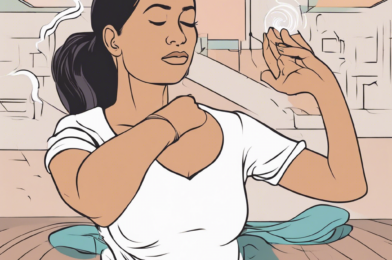We all know that eating healthy can be a challenge, especially when we lead busy lives. Fitting nutritious meals into our packed schedules can seem like a daunting task, but with a few quick and easy recipes, it is possible to enjoy delicious and wholesome meals without spending hours in the kitchen. Here are some simple yet tasty meal ideas that will satisfy your taste buds and fuel your body, even on the busiest of days.
Overnight Oats
Start your day with a nourishing breakfast that takes minimal effort. Overnight oats are a perfect option as they can be prepared the night before. Simply combine rolled oats with your choice of milk, yogurt, or even water, and add your favorite toppings. Try mixing in some chia seeds, cinnamon, and vanilla extract for added flavor and nutritional benefits. Top with fresh or frozen berries, nuts, and a drizzle of honey for a well-rounded and delicious breakfast.
Smoothie Bowl
Smoothie bowls are a fun and colorful way to get your daily dose of fruits and vegetables. Blend together your favorite fruits, such as bananas, strawberries, and mango, with a liquid base like coconut water or almond milk. For added nutrition, throw in some spinach or kale—the sweetness of the fruit will mask the veggie taste. Top your blended creation with crunchy granola, shredded coconut, and fresh fruit for a beautiful and tasty breakfast or snack.
Chicken and Veggie Stir-Fry
This quick and easy stir-fry is a fantastic option for a busy weeknight dinner. Chop up some boneless, skinless chicken breasts and your favorite vegetables, such as bell peppers, onions, broccoli, or mushrooms. Saute everything in a wok or large pan with a small amount of oil. For extra flavor, use a stir-fry sauce or a combination of soy sauce, ginger, and garlic. Serve over cooked rice or quinoa for a well-balanced meal that is packed with protein and vegetables.
sheet-pan salmon and roasted vegetables
Salmon is an excellent source of omega-3 fatty acids and roasting it on a sheet pan with your favorite vegetables is a simple way to prepare a healthy and delicious meal. Slice up some zucchini, bell peppers, onions, and carrots, and toss them with olive oil, salt, and pepper. Place the salmon fillets in the center of the sheet pan and surround them with the prepared vegetables. Roast everything in the oven at 400 degrees Fahrenheit for about 15–20 minutes, depending on the thickness of your salmon.
quinoa salad with chickpeas and veggies
This quinoa salad is a flavorful and protein-packed option that can be prepared ahead of time and enjoyed throughout the week. Cook the quinoa according to the package instructions, and then let it cool. Chop up some cucumbers, tomatoes, red onions, and bell peppers, and mix them together with the cooked quinoa. Add a can of rinsed chickpeas for extra protein and texture. For the dressing, whisk together olive oil, lemon juice, Dijon mustard, salt, and pepper, and pour it over the salad.
turkey lettuce wraps
Turkey lettuce wraps are a refreshing and lightweight option for lunch or dinner. Simply cook some ground turkey in a pan with your favorite seasonings, such as garlic powder, onion powder, and paprika. Chop up some vegetables like tomatoes, onions, and avocado, and wrap everything in a large piece of lettuce. You can also add in some crumbled feta cheese and a drizzle of tzatziki sauce for added flavor.
Conclusion
Incorporating healthy meals into your routine doesn’t have to be complicated or time-consuming. With a bit of preparation and a few simple recipes, you can enjoy nutritious and delicious meals that fit even the busiest of schedules. So, take some time to stock your kitchen with healthy staples and give these quick and tasty meal ideas a try. Your taste buds and your body will thank you!









